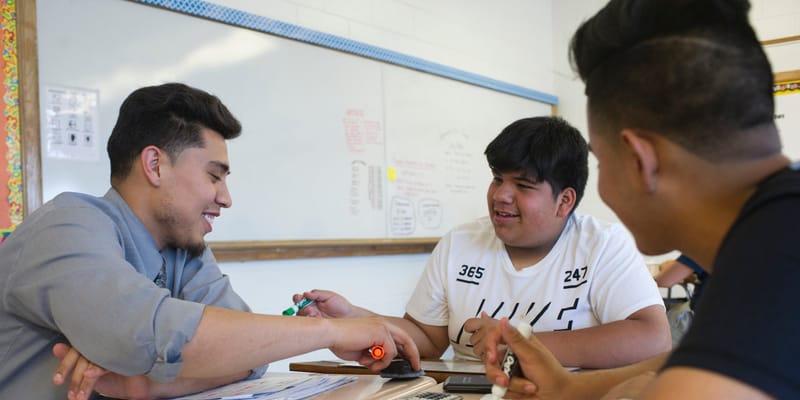High-impact tutoring
Program overview
Small group instruction to supplement classroom learning: High-impact tutoring is an approach to tutoring that emphasizes frequent and ongoing sessions with low student-to-tutor ratios. There is strong evidence that this approach increases academic achievement.
Variety of possible tutor sources: The tutors who deliver high-impact tutoring can be teachers, college students, volunteers, AmeriCorps (or other service learning) fellows, or classroom assistants. Tutors without significant education experience typically receive training to build their content knowledge and facilitation skills. Tutors can be overseen and managed by nonprofit organizations or by individual schools or school districts.
Can be targeted or universal: There are several different approaches to selecting students to participate in high-impact tutoring. In a need-driven model, only students who perform below a given threshold in reading or math receive tutoring. In a curriculum-driven model, tutoring is provided at critical stages of learning development or at school transitions (e.g., reading support in first grade because it is a key year for literacy development). The universal tutoring model provides tutoring to all students in a grade or school.
Low student to tutor ratios and high frequency sessions: The format of high-impact tutoring sets it apart from other tutoring and academic support interventions. In the high-impact approach, groups should have a maximum of 3-4 students per tutor. Tutoring groups have three or more weekly sessions with each session lasting 30-60 minutes. Sessions can occur during the school day or after school, though the former is more common.
Distinct structure aligned with classroom learning: High-impact tutoring is not a substitute for core classroom instruction, but tutoring lessons and activities are typically aligned with core classroom content and grade-level standards. Tutoring lessons are generally structured to include elements such as relationship-building, connections to previous lessons, learning objectives, mini instructional lessons, collaborative work, independent practice, and formative assessments.
Multiple studies with rigorous designs demonstrate that high-impact tutoring is a well-supported strategy for increasing academic achievement.
- This assessment is based on evidence from a 2020 systematic review.
Consider setting and timing: High-impact tutoring is most effective when it is conducted at school and during school hours. Holding tutoring sessions during the school day may allow students to more regularly attend compared to offering sessions after regular school hours. This approach can also facilitate a more academic-focused culture in the tutoring program.
Provide extensive training and support for tutors: Tutors are central to the success of high-impact tutoring initiatives. Tutoring is most effective when it is conducted by teachers or well-trained, paid tutors (e.g., through a fellowship such as AmeriCorps). Non-teacher tutors should participate in intensive training and receive ongoing support throughout the tutoring program, including structured materials and curriculum. Tutors working with older students may also need specific content knowledge in the subject area they are instructing.
Hire a school-based tutoring coordinator: School districts should hire a coordinator, who can dedicate time to managing tutoring initiatives. The coordinator should conduct observations and provide guidance, coaching, and feedback for tutors; organize communications with parents; and facilitate communication between tutors and teachers.
Collect and use data to improve implementation: High-impact tutoring programs should collect data to understand the experience of students and tutors, including qualitative feedback, attendance records, and regular academic assessments, in order to assess and improve the program’s effectiveness and identify opportunities to personalize instruction for students. Qualitative feedback should be used in conjunction with attendance records to understand which students are attending and why, what students like about the program, and what can be improved. Academic assessments, both formal and informal, should be conducted throughout the semester to track students’ progress so that tutors can customize their approach and focus on areas where students need the most support.
